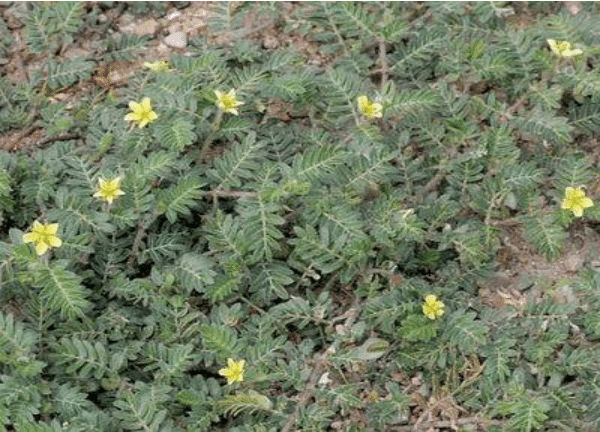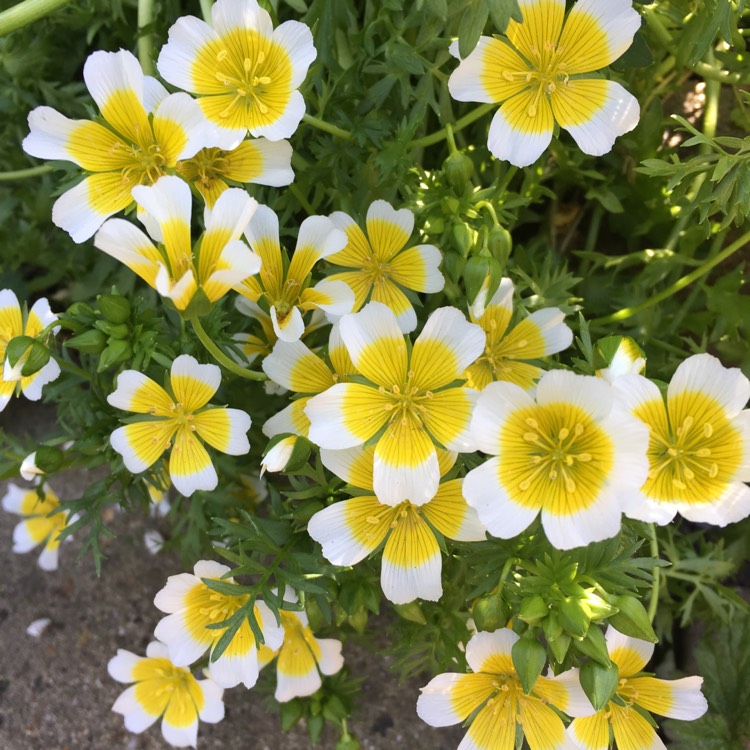Introduced species: Puncturevine (Tribulus terrestris)
Characteristics: Puncturevine–also known as goathead, devil’s thorn, and several other common epithets–is an annual plant in the sunflower family that emerges from a deep, woody taproot. Its opposite, hairy leaves are compound, with 4-8 pairs of leaflets about 1 cm (1/2″) long on stems that form dense, low-growing mats up to 2 meters (6 ft) across. Small, yellow, 5-petaled flowers about the same size as the leaflets come out where leaves meet the stem of the plant. These give way to woody burs with five sections; when mature, the fruits break apart, with a sharp spine on each section strong enough to puncture bicycle tires and thin-soled shoes, and also stick readily in animal fur and hides. A single plant typically produces around 400 fruits, each with two or three seeds.
Spread: Puncturevine spreads by seed; its progeny may either drop near the parent plant, or hitch a ride on passing animals (human or otherwise). It is a significant problem in pastures and other agricultural settings (due to toxicity to livestock and the sharp spines on the fruits, which are a very unpleasant experience for anyone stepping on them unawares), and may also be found on roadsides and in ditches (which provide corridors enabling its spread). Native to the Mediterranean area, puncturevine is widespread in southern and eastern Oregon; in the Portland area, it is known mostly in and around the Columbia Slough.
Control: For small infestations, hand-pulling is effective if done before seed set; be sure to wear gloves, and remove any spiny burrs that you find. An organic mulch at least 8 cm (3″) thick on top of the plant can provide control by depriving it of light. Puncturevine’s seeds can remain viable in soil for many years, so treatment needs to be ongoing. There are two biocontrol agents–a seed weevil and a stem weevil–that provide effective control of this species when used in tandem, but they are difficult to establish in areas with cold winters.
Native replacement: Common meadowfoam (Limnanthes douglasii) is a prolific annual native to the southern Willamette Valley and elsewhere in Oregon and California (though not on the Portland Plant List). It produces showy blossoms that feature yolk-yellow centers ringed with white (hence another common name: Poached-egg plant), and grows well in wet, grassy habitats (including areas with poorly-drained clay soil).


